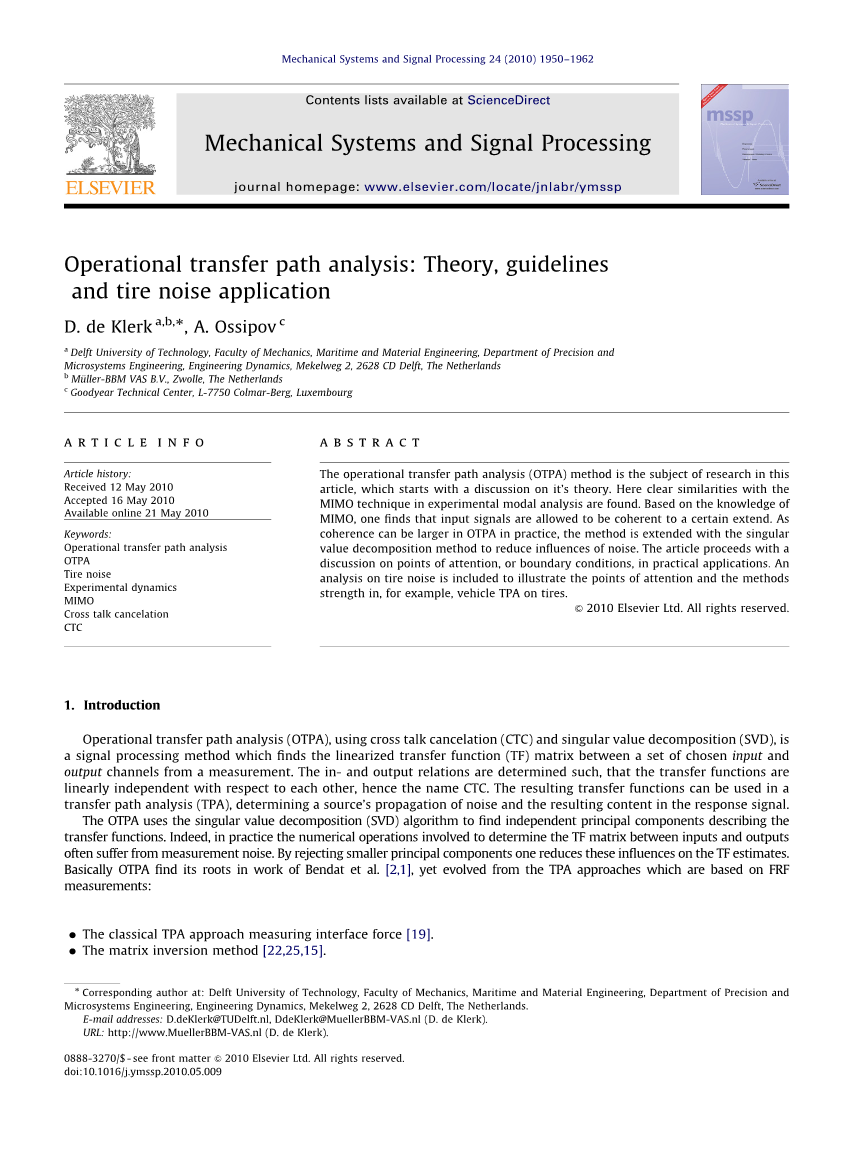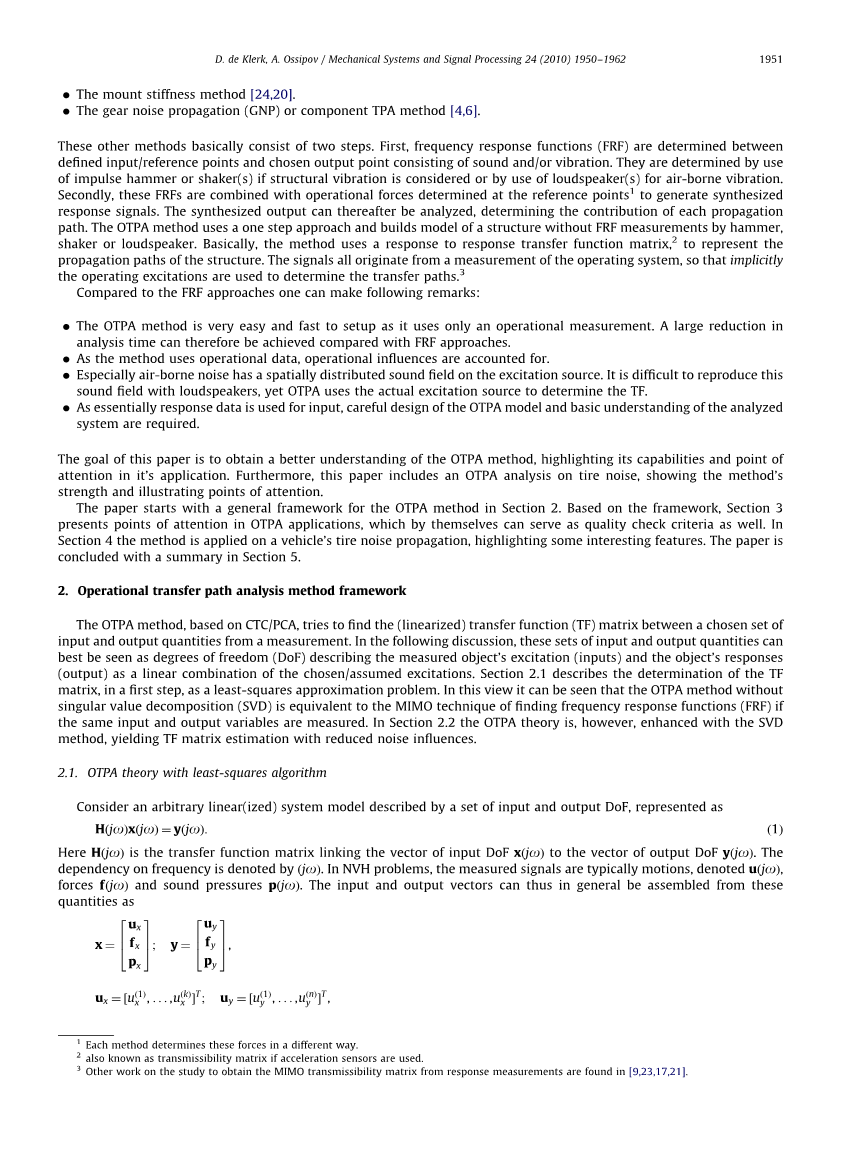

英语原文共 13 页,剩余内容已隐藏,支付完成后下载完整资料
Operational transfer path analysis: Theory, guidelines and tire noise application
Abstract
The operational transfer path analysis (OTPA) method is the subject of research in this article, which starts with a discussion on it#39;s theory. Here clear similarities with the MIMO technique in experimental modal analysis are found. Based on the knowledge of MIMO, one finds that input signals are allowed to be coherent to a certain extend. As coherence can be larger in OTPA in practice, the method is extended with the singular value decomposition method to reduce influences of noise. The article proceeds with a discussion on points of attention, or boundary conditions, in practical applications. An analysis on tire noise is included to illustrate the points of attention and the methods strength in, for example, vehicle TPA on tires.
Keywords
Operational transfer path analysis;OTPA;Tire noise;Experimental dynamics;MIMO;Cross talk cancelation;CTC
1. Introduction
Operational transfer path analysis (OTPA), using cross talk cancelation (CTC) and singular value decomposition (SVD), is a signal processing method which finds the linearized transfer function (TF) matrix between a set of chosen input and output channels from a measurement. The in- and output relations are determined such, that the transfer functions are linearly independent with respect to each other, hence the name CTC. The resulting transfer functions can be used in a transfer path analysis (TPA), determining a source#39;s propagation of noise and the resulting content in the response signal.
The OTPA uses the singular value decomposition (SVD) algorithm to find independent principal components describing the transfer functions. Indeed, in practice the numerical operations involved to determine the TF matrix between inputs and outputs often suffer from measurement noise. By rejecting smaller principal components one reduces these influences on the TF estimates. Basically OTPA find its roots in work of Bendat et al. [2,1], yet evolved from the TPA approaches which are based on FRF measurements:
bull;
The classical TPA approach measuring interface force [19].
bull;
The matrix inversion method [22,25,15].
bull;
The mount stiffness method [24,20].
bull;
The gear noise propagation (GNP) or component TPA method [4,6].
These other methods basically consist of two steps. First, frequency response functions (FRF) are determined between defined input/reference points and chosen output point consisting of sound and/or vibration. They are determined by use of impulse hammer or shaker(s) if structural vibration is considered or by use of loudspeaker(s) for air-borne vibration. Secondly, these FRFs are combined with operational forces determined at the reference points1 to generate synthesized response signals. The synthesized output can thereafter be analyzed, determining the contribution of each propagation path. The OTPA method uses a one step approach and builds model of a structure without FRF measurements by hammer, shaker or loudspeaker. Basically, the method uses a response to response transfer function matrix,2 to represent the propagation paths of the structure. The signals all originate from a measurement of the operating system, so that implicitly the operating excitations are used to determine the transfer paths.3
Compared to the FRF approaches one can make following remarks:
bull;
The OTPA method is very easy and fast to setup as it uses only an operational measurement. A large reduction in analysis time can therefore be achieved compared with FRF approaches.
bull;
As the method uses operational data, operational influences are accounted for.
bull;
Especially air-borne noise has a spatially distributed sound field on the excitation source. It is difficult to reproduce this sound field with loudspeakers, yet OTPA uses the actual excitation source to determine the TF.
As essentially response data is used for input, careful design of the OTPA model and basic understanding of the analyzed system are required.
The goal of this paper is to obtain a better understanding of the OTPA method, highlighting its capabilities and point of attention in it#39;s application. Furthermore, this paper includes an OTPA analysis on tire noise, showing the method#39;s strength and illustrating points of attention.
The paper starts with a general framework for the OTPA method in


